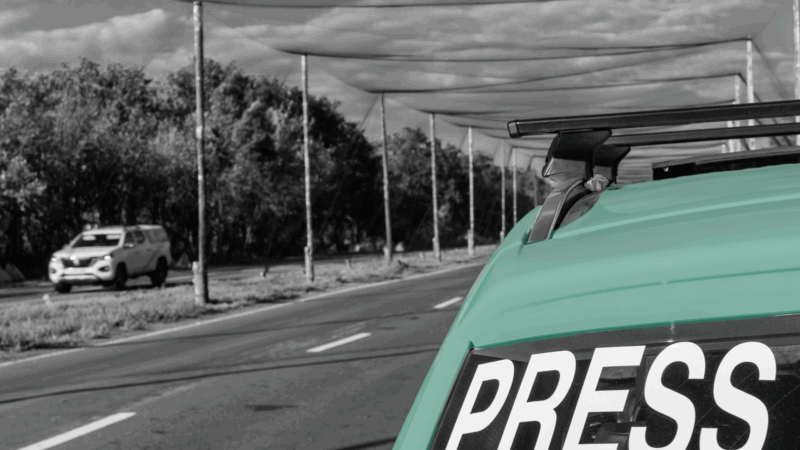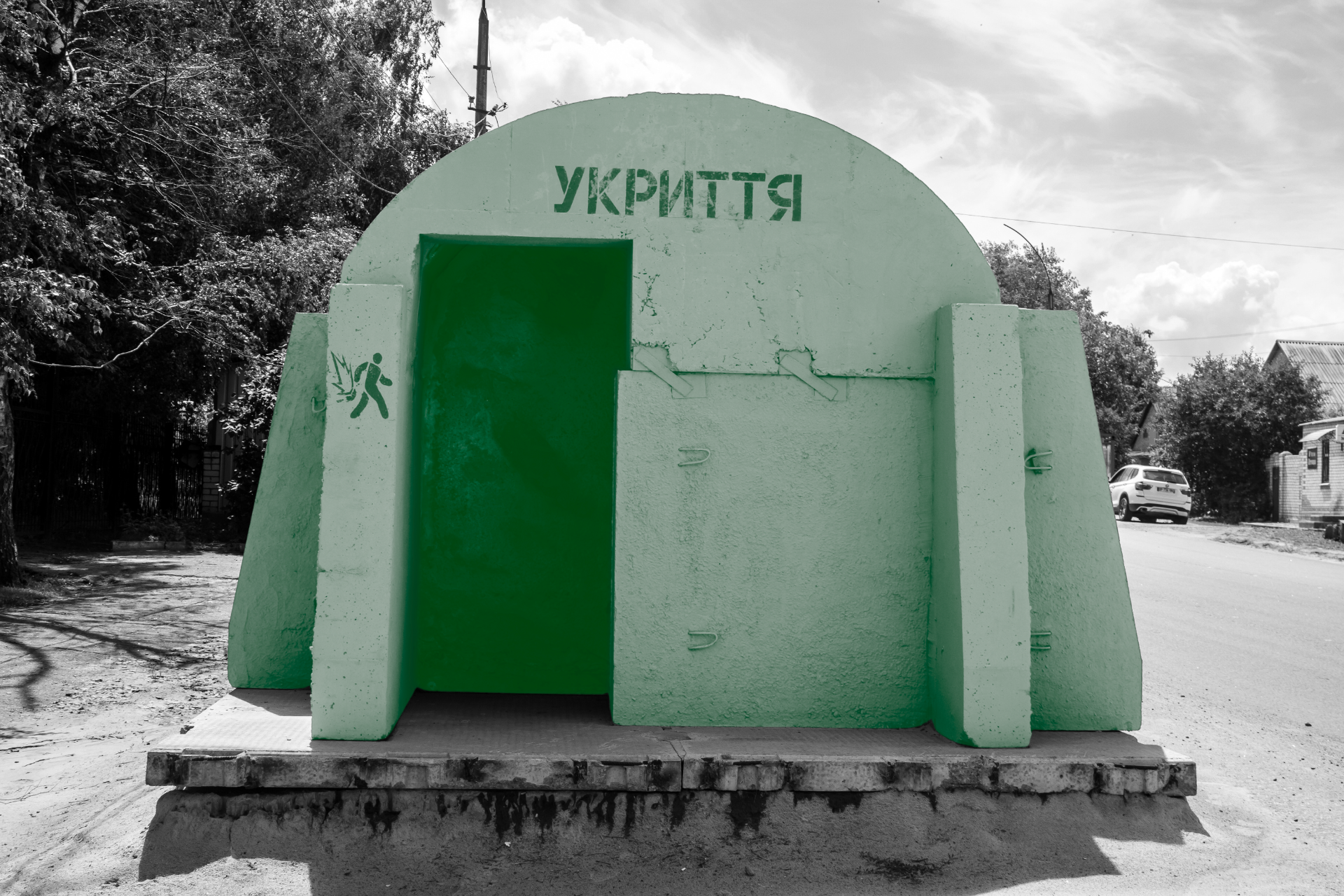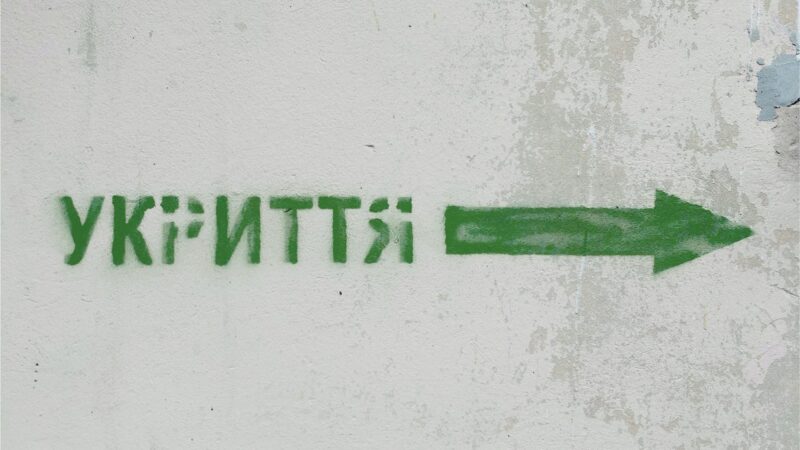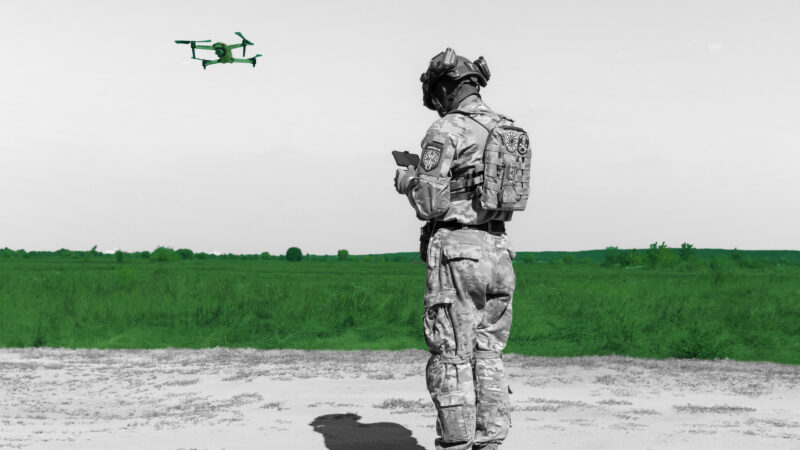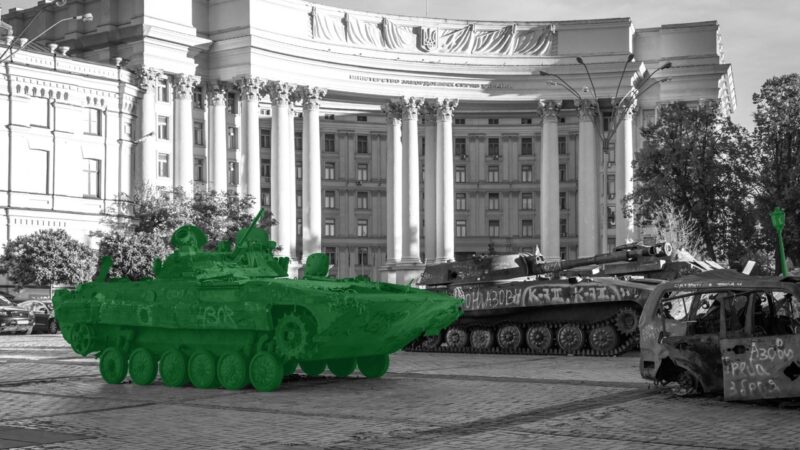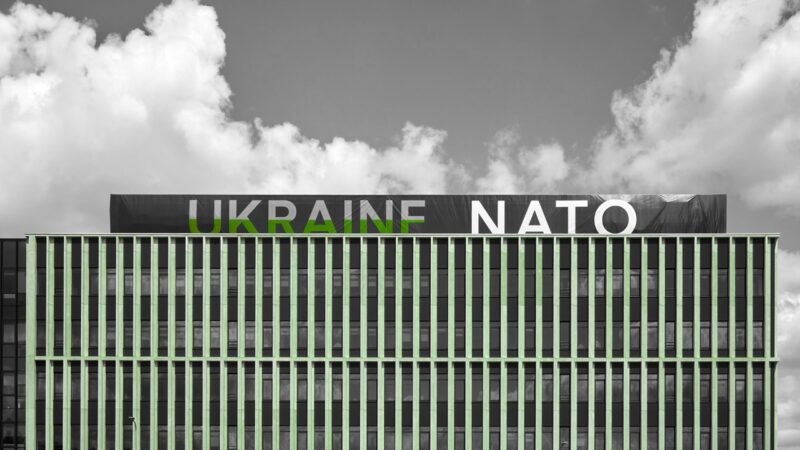Interview with Bohdan Krawchenko | Reflections on Ukraine’s Socio-Economic History Amid War
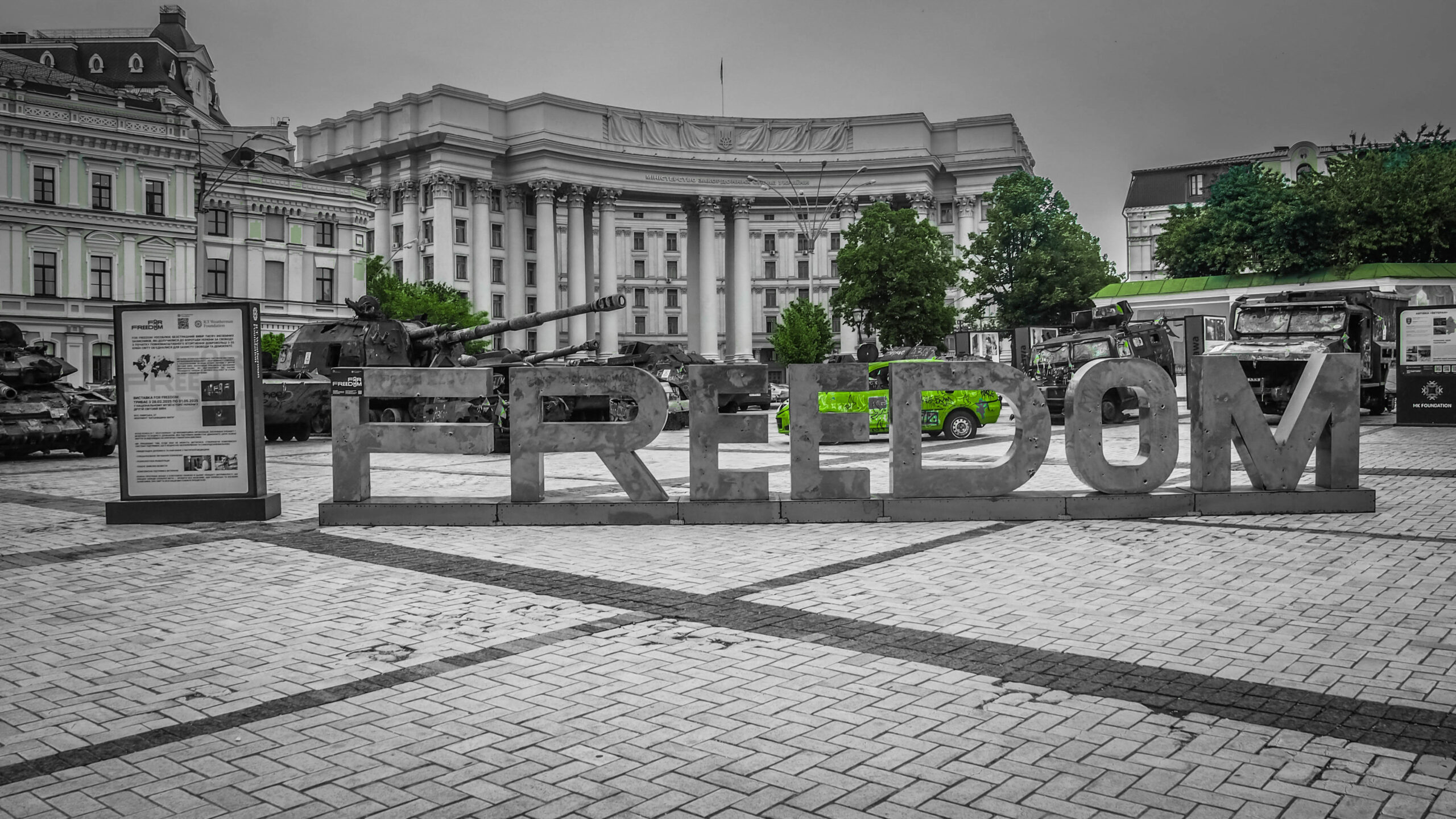
Tamara Krawchenko: Tell us about the course on nation building that you just finished teaching in the Political Science Department of the National University of Kyiv-Mohyla Academy—and a bit about the academy as an institution.
Bohdan Krawchenko: The Kyivan Mohyla Academy was the first university in the East Slavic world and played an important role in educating Ukraine’s political and cultural elites. When imperial Russia took it over, they turned it into a theological seminary and eventually closed it. It was reopened after Ukraine gained independence in 1991, based on the Western model of post-secondary education, and it is one of the best universities in the country. It has a vibrant and politically conscious student population that played a notable role in the Orange Revolution in 2004 and have come to hold many influential positions in the Ukrainian government and elsewhere. I’m an honorary professor there, and I led the introduction of master’s programmes in 1995, so it was great to interact with students and faculty decades later.
The course, called “State and Nation Building in 20th-Century Ukraine: A Historical Political Economy Perspective,” examined how political power—imperial and Soviet Russian policies—shaped Ukraine’s social structure and impacted the development of its national identity. It looked at modernization in the 20th century and Ukraine’s position as an internal colony, including the persistent cultural division of labor that laid the groundwork for national assertion. The final session on post-independence was delivered by Yulia Yurchenko, a political economist who teaches in the UK; she described developments such as social stratification, state capture and corruption, and the rise of oligarchs. I was assisted by a doctoral student, who did an amazing job of animating discussions in the seminar component.
Tamara Krawchenko: How did the students respond to the course?
Bohdan Krawchenko: Socio-economic history is not covered in Ukrainian high school or university. Most of the students in the course were born around the year 2000. The landscape of their shared historical memory differs from that of prior generations. While they had studied the history of Ukrainian political thought—a compulsory course in political science—they had limited understanding of the essential areas of economic and social structures. The students told me they appreciated the social and economic history aspect of the course because it was new to them.
But the war and Putin’s denial of Ukraine’s historical legitimacy have generated urgent interest in understanding the distinctions between Ukraine and Russia. Here, socio-economic history is central—both to this task and to the decolonization agenda. While Ukraine had a robust intellectual tradition in these fields at the turn of the 20th century, contemporary scholarship remains underdeveloped despite the burst of research by newer academic generations. Establishing the basic frameworks and impacts of Russian and Soviet colonialism is the essential foundation for advancing this decolonization agenda. The course aimed to contribute to this effort.
Tamara Krawchenko: What are some of these frameworks and impacts?
Bohdan Krawchenko: A core element of these frameworks is understanding the enduring nature of Russian social and state structures, along with the drivers of its imperial policy. The course began with this foundation. Ukrainian students today are “allergic” to anything Russian, but they actually have a dim understanding of Russian social history. So, they became increasingly interested in this, because it situated today’s struggle within the broader context of fighting for a better civilizational choice.
Russia’s exceptionalism, which Russians extol, refers to the historical continuity of centralized autocratic authority, which has existed since the end of the 15th century, when Ivan III established Muscovy as a patrimonial state. This was a system in which rulers had unrestrained personal authority and treated the state as their personal possession, with the line between public and private interests blurred. The patrimonial state’s control over Russian society prevented the rise of competing classes and exercised arbitrary power to extract funds to maintain a large military apparatus. Meanwhile, agricultural productivity did not improve between the 15th and 19th centuries. This economic management model, incapable of intensive development, necessitated the conquest of new lands for large-scale imperial colonization. While some other imperialisms exploited their colonies primarily through economic levers, leaving cultures and social arrangements largely unaltered, Russian imperial domination of the colonies always implied large-scale colonization that altered the social structure of the titular nations.
Ukraine’s incorporation into the Russian Empire in the 18th century resulted in the imposition of a patrimonial order, which demolished the social structure that had developed following the 1648 uprising. This revolution led to the establishment of the Cossack Hetmanate, characterized by a corporate social system similar to those in 17th-century Europe. After the revolution, serfdom was abolished, and the Hetman was elected by the Cossack Rada made up of the officer class, which essentially formed a gentry. However, the abolishment of the Hetmanate led to Ukraine’s severance from European markets, resulting in the decline of trade and the merchant classes. The abolition of municipal autonomy and excessive taxation undermined the urban classes and domestic production. The urbanization rate in the mid-18th century was higher than at the end of the 19th century. While Ukrainians comprised the vast majority of the urban population in the 18th century, by the turn of the 20th century the Ukrainian urban population declined to less than one-third of the total. Moreover, due to bans on the Ukrainian language, literacy rates were higher in the 18th than by the end of the 19th century. The number of Russians in Ukraine surged from 40,000 in the mid-18th century to 2.7 million by the end of the 19th century. All of this, of course, meant that compared to other national movements in Eastern Europe, in 1917 the Ukrainian one had much lower capacities to achieve its goals.
Tamara Krawchenko: I suppose there is broad acceptance that Ukraine was considered a colony during the Tsarist period. However, many may find this perspective difficult to accept as a descriptor of Soviet Ukraine’s status—especially during the post-Stalin period, which saw much economic development and modernization. After all, Ukraine was part of the Second World, not the Third World, and had high educational, health, and other indicators.
Bohdan Krawchenko: Unlike overseas colonizers, Russia absorbed contiguous territories around it and integrated them into a single state. Thus, many people find it hard to use the term “colonialism.” The fact that Russia’s European acquisitions—Ukraine and the Baltic states—meant taking over countries with a higher level of development than the imperial core also adds an unusual dimension. Significantly, while scholarship in Ukrainian studies has in the past provided ample analysis of oppression, colonial frameworks were rarely employed. However, these approaches have gained much traction recently. In my work, I have used “internal colonialism” as a model for analysis, and I highly recommend Michael Hechter’s pioneering study Internal Colonialism: The Celtic Fringe in British National Development (1975).
In internal colonialism, the periphery’s economy plays an instrumental role, with development limited to sectors serving the interests of the dominant group. This economic policy distorted the economic geography, with growth confined to regions serving the Empire. Whereas cities in Russia served a broad range of societal functions, in Ukraine they functioned primarily as supply points for raw materials or export hubs.
Internal colonialism also distorts the social structure of the periphery. Members of the core occupy top social positions, while the titular population is placed lower, creating a cultural division of labour. When this division is based on cultural differences, the disadvantaged groups tend to reactively assert their cultural identity. To prevent unrest, the imperial core often suppresses this identity, relegating it to cultural and folkloric practices. Hampered social mobility eventually fuels social and economic grievances, usually leading to national protests. Among the key aspects of the findings of research on internal colonialism are the absence of social structure convergence and the persistence of cultural divisions of labour once the periphery comes under the domination of the core. For decades, scholars of the USSR, influenced by structural functionalism, believed that with modernization, status would be earned rather than ascribed and cultural factors would lose significance. This did not occur with Soviet Ukraine, and in the final analysis, the only way to alter this division of labour was for the periphery to take control of its society.
In Soviet society, without a private sector, completing higher education was a precondition for occupational and social mobility. The proportion of Ukrainian youth with the necessary qualifications for higher education was among the highest in the USSR, surpassed only by the Baltic republics. However, the relative standing of Ukrainians with a complete higher education plummeted to 14th place among the fifteen titular republics; only the Tajiks were in a weaker position. The Russification of higher education, which placed Ukrainian youth at a disadvantage, took a toll on their ambitions and was a driver of national discontent. As early as 1959, every second Russian in Ukraine was a white-collar employee, and the cultural division of labour was solidly maintained. As Ivan Dziuba notes in his Internationalism or Russification, “The national question again develops into a social one. The language barrier aggravates and exacerbates social divisions.”
Tamara Krawchenko: To switch our tack, tell us about your stay in Kyiv. What is the mood on the street?
Bohdan Krawchenko: The war is, of course, causing economic and social hardship. Before the full-scale invasion, Kyiv had around 3.9 million people, and in the first year almost half the population left. In the centre of the city where I live, it is a bit eerie to see the number of apartments where curtains are always drawn and lights never get turned on. Kyiv has regained some population because of the influx of displaced people from war torn regions, especially women and children. All of this has had a big impact on the city’s economy, especially in the retail and service sectors. Some stores are closed; others are struggling because of the absence of customers. Unemployment is an issue. Travel and logistics are a challenge. Prices have increased. At the same time, there is a small sector of the population that appears to have profited from the war, most likely through corruption schemes; these nouveau riche drive incredibly expensive cars in the city centre, which irritates many people.
On the streets, women make up a high proportion of the crowds. In Kyiv and other cities, I was struck by how many young people display a Gothic style—I guess, as a reflection of the current gloomy state of affairs. With so many males in the armed forces, there is a shortage of skilled labour. The numerous amputees you see remind you of the cost of the war. And travelling through different regions, the vast expanses of blue and yellow flags in the cemeteries are heartbreaking.
Overall, there is uncertainty about the future, and when asked about what may happen, a common answer is, “We believe in the ZSU” (Armed Forces of Ukraine). But people don’t sit around and contemplate how miserable things are. Besides, just how many times can you repeat the obvious, that the situation is terrible. You just get on with it. At the same time, there is no doubt that the war, now in its fourth year, is taking a toll on the mental health of the population. Anxiety, stress, and exhaustion are prevalent—especially in regions that are regularly bombed and closer to the front lines, where economic collapse has led to high unemployment.
Tamara Krawchenko: So many people remark on Ukrainians’ resilience—where do you think this comes from? What does it say about Ukrainian society?
Bohdan Krawchenko: The Ukrainians’ response to Russia’s occupation took everyone by surprise, not just the world but Ukrainians themselves. The level of self-organization, initiatives from below, the extraordinary acts of very ordinary people, the surge of pride in Ukrainian identity, were amazing. The war revealed that Ukrainian society as a social formation—social fabric, culture, and norms formed over many years—is very different from Russia, where society is very much degraded and inert. Also, the war, the conflict with Russia has unalterably put Ukraine on a European pathway. Notwithstanding all of the challenges, there is a clear light at the end of the tunnel that’s worth fighting for. There’s no such light in Putin’s Russia.
Interviewer: Tamara Krawchenko, an Associate Professor of Public Administration at the University of Victoria and the interviewee’s daughter.
The interview transcript has been edited for length and clarity. Links have been added to relevant entries in the Internet Encyclopedia of Ukraine.
